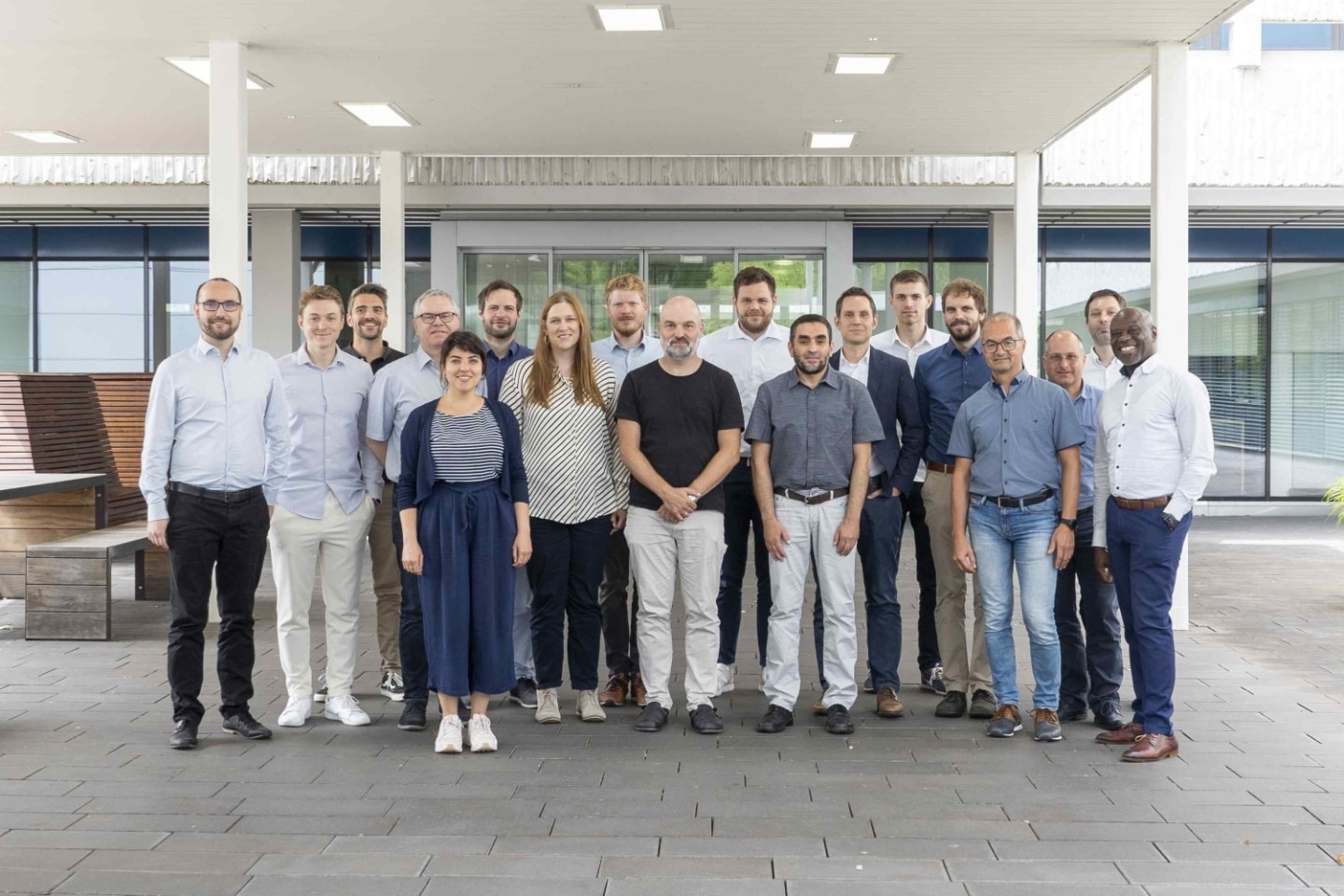Bidirectional charging allows electric vehicles to be charged and discharged as needed. E-cars can therefore function as mobile power storage devices, enhancing the flexibility of the energy infrastructure. To ensure that bidirectional charging can be employed on a large scale, a partnership led by Fraunhofer IAF is investigating novel charging technologies.
 On July 17, 2023, the project partners (Fraunhofer IAF, University of Stuttgart, Robert Bosch and Ambibox) met for the official kick-off of the GaN4EmoBiL project in Freiburg. Image Credit: Fraunhofer IAF
On July 17, 2023, the project partners (Fraunhofer IAF, University of Stuttgart, Robert Bosch and Ambibox) met for the official kick-off of the GaN4EmoBiL project in Freiburg. Image Credit: Fraunhofer IAF
The partners in the recently announced project GaN4EmoBiL are developing novel semiconductor, device, and system technologies for the 800 V class.
When no wind or solar energy is produced, bidirectional charging enables electric automobiles to be charged with power from renewable sources and discharged as necessary. Consumers can contribute to energy security by using this electricity for other electrical appliances or supplying it to the power grid.
However, current technology methods fall short of the goals for affordability and effectiveness. Bidirectional charging systems that connect batteries, the grid, nearby generators, and consumers with high efficiency and high-power density are not yet widely available.
Research Project GaN4EmoBiL Launched
This problem has now been approached by the Fraunhofer Institute for Applied Solid State Physics IAF, the University of Stuttgart, Robert Bosch GmbH, and Ambibox GmbH in the new research project “GaN4EmoBiL—GaN power semiconductors for electromobility and system integration through bidirectional charging.”
The consortium’s objective is to show a bidirectional charging system that is intelligent and economical, employing innovative semiconductor technologies, device concepts, and system elements. The three-year experiment is supported by the “Elektro-Mobil” initiative of the German Federal Ministry of Economic Affairs and Climate Action (BMWK).
Our project aims to connect batteries, renewable energies and electrical consumers in an economical and flexible way. Through bidirectional charging solutions, the previously unused batteries of parking electric vehicles will make a greater contribution to increasing the flexibility of the energy system and avoiding CO2 emissions in the future.
Dr. Stefan Mönch, Researcher, Fraunhofer IAF
Dr. Etienne Tchonla, R&D Director at Ambibox, stated, “In future, efficient, small-scale and intelligent charging infrastructures in electromobility will contribute to overcoming social challenges.”
Previous Solutions are Expensive, Inefficient, or Too Complex
Power semiconductor devices, which are now being used in the first bidirectional medium-power DC wall boxes for batteries up to 800 V, are not yet ideal for this application: They either have high efficiency but high cost (silicon carbide) or poor efficiency but low cost (silicon).
Gallium nitride-on silicon (GaN-on-Si) transistors, now available in 650 V, are affordable and effective, but their inadequate voltage rating necessitates using a complicated circuit.
The price, effectiveness, and compactness of charging solutions need to be greatly increased to incorporate as many batteries as feasible in a bidirectional manner. To do this, the project partners of GaN4EmoBiL are initially looking at novel semiconductor technologies.
They intend to use a novel, cost-effective GaN technology on other substrates (like sapphire), allowing for inexpensive, effective 1200 V transistors. On the basis of this, they are creating new system components (such as a charger and bidirectional charging cable) and researching their dependability for much longer operation hours.
Demonstrators should close the research and development gap that now exists between price, efficacy, compactness, functionality, power class, and voltage class (800 V batteries) at the conclusion of the project.
Additionally, the consortium seeks to develop young scientists, safeguard national know-how in the field of electromobility, and foster information transfer between academic institutions, research organizations, and industry.
The research is being funded by the German Federal Ministry of Economic Affairs and Climate Action as a part of the “Elektro-Mobil” initiative.